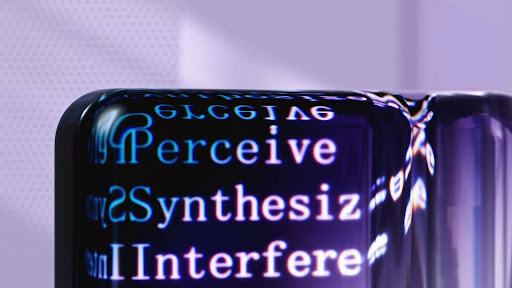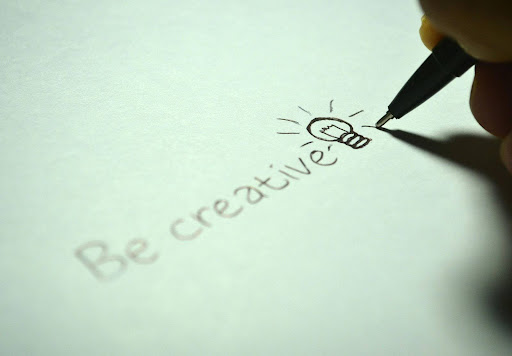
AI Creativity vs Human Creativity: Can Machines Truly Imagine?
Imagine an artist who never sleeps, never doubts, and learns every style in minutes. Sounds impressive – until you realize it’s not a person. It’s AI. Meanwhile, platforms like EssayWriters, built around experts with unique voices and judgment, remind us what genuine human creativity looks like. While AI can imitate genius, it can’t replicate empathy or intent. The real question isn’t who paints better or writes faster – it’s whether machines and humans define creativity the same way.

When Sparks Meet Circuits
Human imagination grows from chaos: memories, emotions, failures, and hopes. Every painting or poem carries fingerprints of experience. The debate over human creativity vs AI shows how people use imperfections as inspiration, while AI avoids them by design.
AI models rely on patterns, data, and repetition. They create what has been, not what’s felt. For instance, an AI can write a love poem using thousands of past poems as templates, but it doesn’t know heartbreak. That lack of lived meaning keeps its work dazzling yet hollow.
Humans invent from desire. That’s why artists still move us more than algorithms ever could, at least for now.
Still, AI sparks a useful question: can data simulate emotion well enough to fool us? And if it can, does that redefine authenticity?
Human Creativity vs AI Capabilities
AI’s advantage lies in scale and speed. In minutes, it can generate hundreds of logo ideas, music samples, or essays. But creativity isn’t about volume.
A human designer might take hours to sketch one logo, then scrap it. Yet that process – the internal dialogue, the stubbornness, the rethinking – creates originality. AI can’t replicate uncertainty, which is often where breakthroughs live.
Still, AI has become indispensable in creative industries. Advertising agencies use it to A/B-test taglines; filmmakers use AI to pre-visualize scenes; musicians combine neural networks with analog instruments.
Today, we see this collaboration shaping industries everywhere.
- Film: AI helps storyboard directors’ visions, cutting pre-production time in half.
- Marketing: Teams use generative models to brainstorm slogans, then refine the tone manually.
- Education: Students rely on AI to outline essays before injecting their own personality.
- Music: Producers use neural sound mixing to explore unheard styles.
Each example proves the same point: AI widens possibilities, but only humans turn those possibilities into art.
Are Humans and AI Equally Creative? Here’s where things get tricky. AI isn’t “creative” in the emotional sense, but it does mimic innovation remarkably well. The AI vs. human creativity comparison often boils down to purpose: humans express, and machines execute.
According to Michael Perkins at essaywriters.com, professional essay writers still lead the field when it comes to depth and expression. His analysis showed that while AI handles data and structure well, it lacks the instinct and storytelling power that make writing feel alive.
At the core, humans and machines differ in motivation:
- Humans create to connect, provoke, or make sense of emotion.
- AI creates to optimize, predict, and mirror patterns.
- Humans thrive on imperfection; creativity often comes from accidents.
- AI thrives on precision; it learns from past success, not from failure.
Yet there’s another layer – bias. AI learns from human data, which means it reproduces human patterns, including cultural stereotypes. Left unchecked, it risks amplifying the very biases creative work is meant to challenge. Ethical design, human oversight, and emotional intelligence remain essential guardrails.
When Logic Tries to Paint
Consider an experiment where both a human artist and an AI were tasked with illustrating the same theme: “loneliness.” The AI vs human creativity illustration showed two radically different results.
The human drew a dim street with a single shadow walking away. The AI produced an intricate abstract: cold, symmetrical, emotionally precise but emotionally empty. Critics called the human work “messy but moving.” The AI’s version? “Flawless but sterile.”
This reveals the heart of the debate. AI can calculate beauty, but it can’t ache. It interprets emotion but doesn’t own it. And that’s why its art, while impressive, feels more like translation than expression.
However, there’s a silver lining. When artists use AI to visualize inner emotions they struggle to describe, they sometimes reach new layers of expression. The machine becomes a mirror reflecting fragments of thought back in unexpected ways.
Which Side Does Education Take?
In education and content creation, students often test both sides daily. They use ChatGPT or similar models to outline essays, then rewrite them in their own voice. The process blends human nuance with machine precision.
Sites like NoCramming even host discussions around these blurred lines. One recent discussion of the Essay Hub review on their student forum explored whether using AI-generated drafts is “learning” or “outsourcing” as opposed to turning to human experts.
The consensus? It depends on intent. When AI assists curiosity, it’s progress. When it replaces thinking, it’s plagiarism with better grammar.
The most insightful posts on NoCramming suggest using AI as a tutor rather than a ghostwriter. It’s a subtle shift from using AI for convenience to using it for growth.

AI vs Human: The Creativity Experiment
Imagine locking a painter, a poet, and a neural network in one room with the prompt “hope.” This experiment might surprise you.
The painter sketches abstract light: imperfect, emotional, alive. The poet writes lines that tremble with memory. The AI creates a gallery of pixel-perfect sunrise patterns. Technically flawless, yet something’s missing: the risk of being misunderstood.
Creativity isn’t just output. It’s the courage to be wrong. Machines don’t know fear, rejection, or love – the fuel of invention. Until they do, AI remains just an echo of human thought.
But that echo can still inspire us. Many creators admit that collaborating with AI helps them escape creative blocks. The challenge now is learning when to stop listening to the algorithm and start listening to ourselves.
Where We Go from Here
The ongoing dialogue of AI vs. Human Creativity isn’t a war – it’s an awakening. Humans define creativity through vulnerability; AI defines it through optimization. When they merge, we get art that’s both precise and profound.
Whether you’re writing with EssayWriters, experimenting on NoCramming, or sketching in your dorm room, remember: creativity grows from emotion. Machines may enhance it, but they can’t own it.
The future belongs to those who master collaboration – humans who understand code, and algorithms that understand context. For now, human imagination still writes the rules.